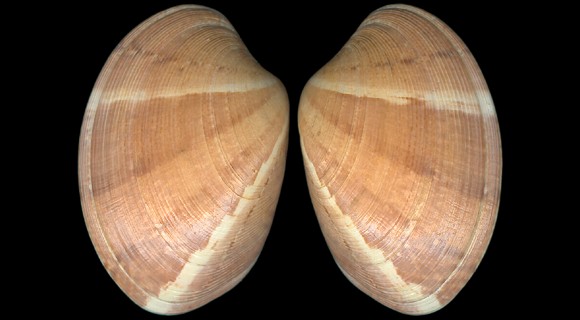
Norway to Morocco, Mediterranean. Burrowed in various soft bottoms: sands, gravels, maërl, from subtidal grounds down to circa 180m deep
(DORIS). Present in the photic zone, rarer deeper. Original taxon: Venus rhomboides.
Above and below: 20-30m deep, off Chioggia, Venezia, NE. Italy. 46mm.
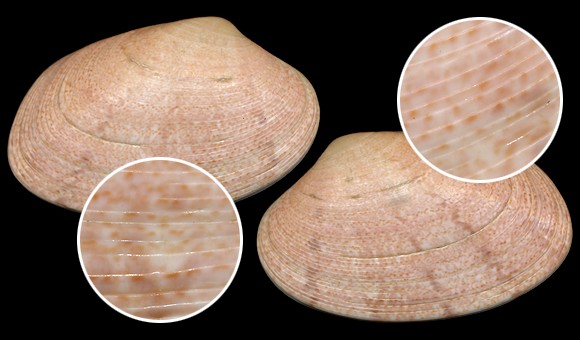
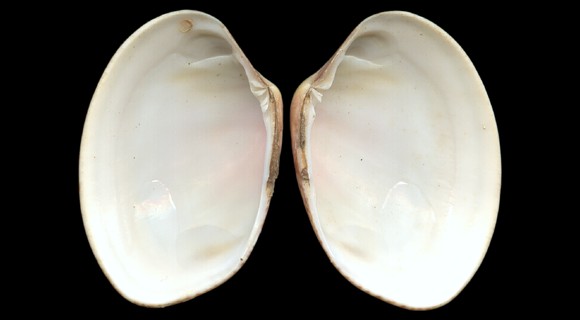
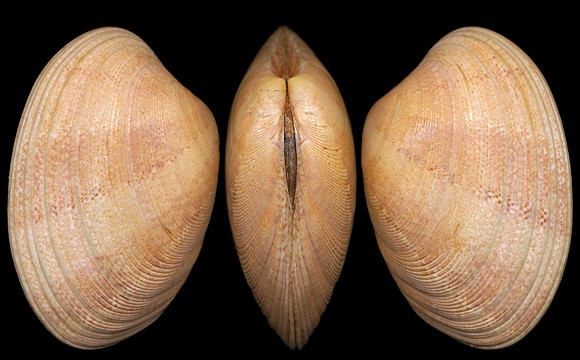
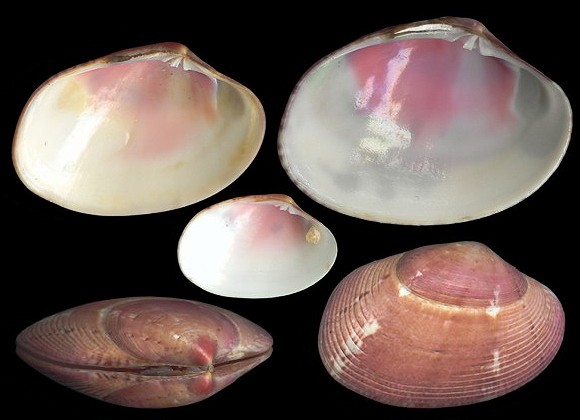
In English Channel exists the rose variant named “sarniensis”, locally common. Collected on sand at extreme low tide, les Noires, Saint-Malo, N. Brittany, NW. France. 17-37mm. Vernacular names: “Banded Carpet-shell”, “Palourde Rose”.
« Venus sarniensis: Shell […] thick, convex, yellowish-white, mostly marked with numerous red or purplish zigzag lines, which are often disposed in interrupted longitudinal rays, rarely of an uniform chocolate or fawn-color; and extremely variable in the disposition of its marks and colors. The transverse striae are very numerous and rounded, not becoming broader at the anterior side, and usually interrupted by strong transverse lines of annotination; the anterior side is very obtuse and swollen; the margin obtuse, and in full grown specimens a little flexuous towards the anterior end; beaks prominent, recurved, with a purple heart-shaped areola under them; inside white, purple, or greenish-white; two of the teeth cloven. » – W. Turton: Conchylia insularum Britannicarum, London 1822, via BHL.
« Venus sarniensis: Shell […] thick, convex, yellowish-white, mostly marked with numerous red or purplish zigzag lines, which are often disposed in interrupted longitudinal rays, rarely of an uniform chocolate or fawn-color; and extremely variable in the disposition of its marks and colors. The transverse striae are very numerous and rounded, not becoming broader at the anterior side, and usually interrupted by strong transverse lines of annotination; the anterior side is very obtuse and swollen; the margin obtuse, and in full grown specimens a little flexuous towards the anterior end; beaks prominent, recurved, with a purple heart-shaped areola under them; inside white, purple, or greenish-white; two of the teeth cloven. » – W. Turton: Conchylia insularum Britannicarum, London 1822, via BHL.
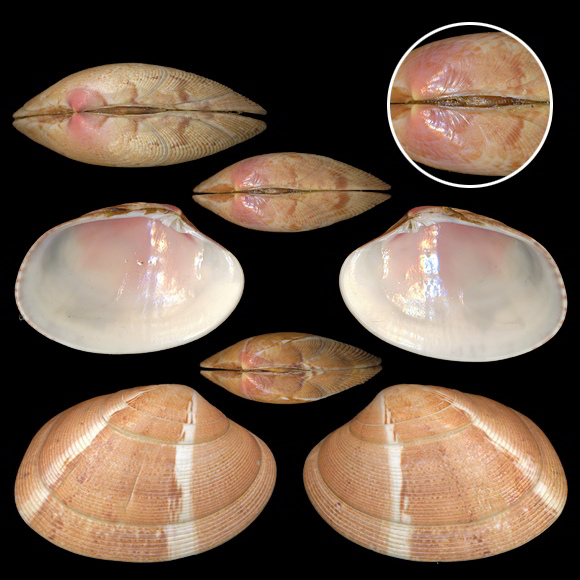
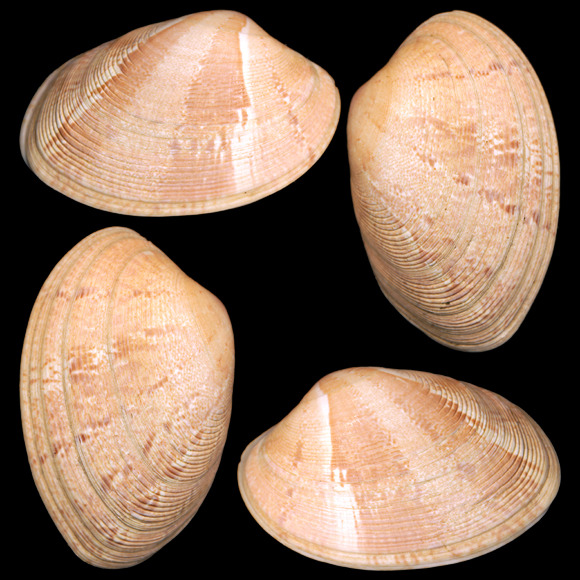
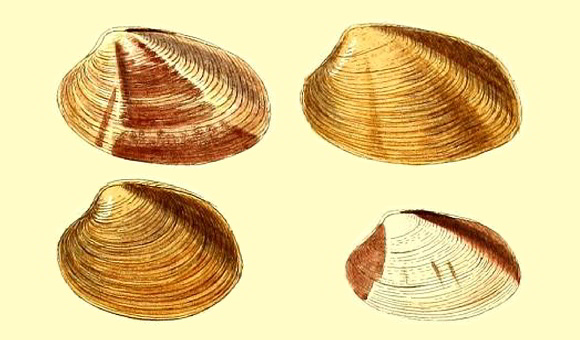
« Tapes virginea: of an oblong oval form, rather compressed, with grooves which are rather more distant and strong at the sides than in the middle. The ventral and dorsal margins are both rather straight ; the anterior end short and rounded, the posterior obtusely truncated. The prevailing colour is pinkish-white, with rays of brighter pink and a rose tint inside. » – G. B. Sowerby: Thesaurus conchyliorum vol. II, London 1855, text p. 690 and plate CXLIX via BHL.